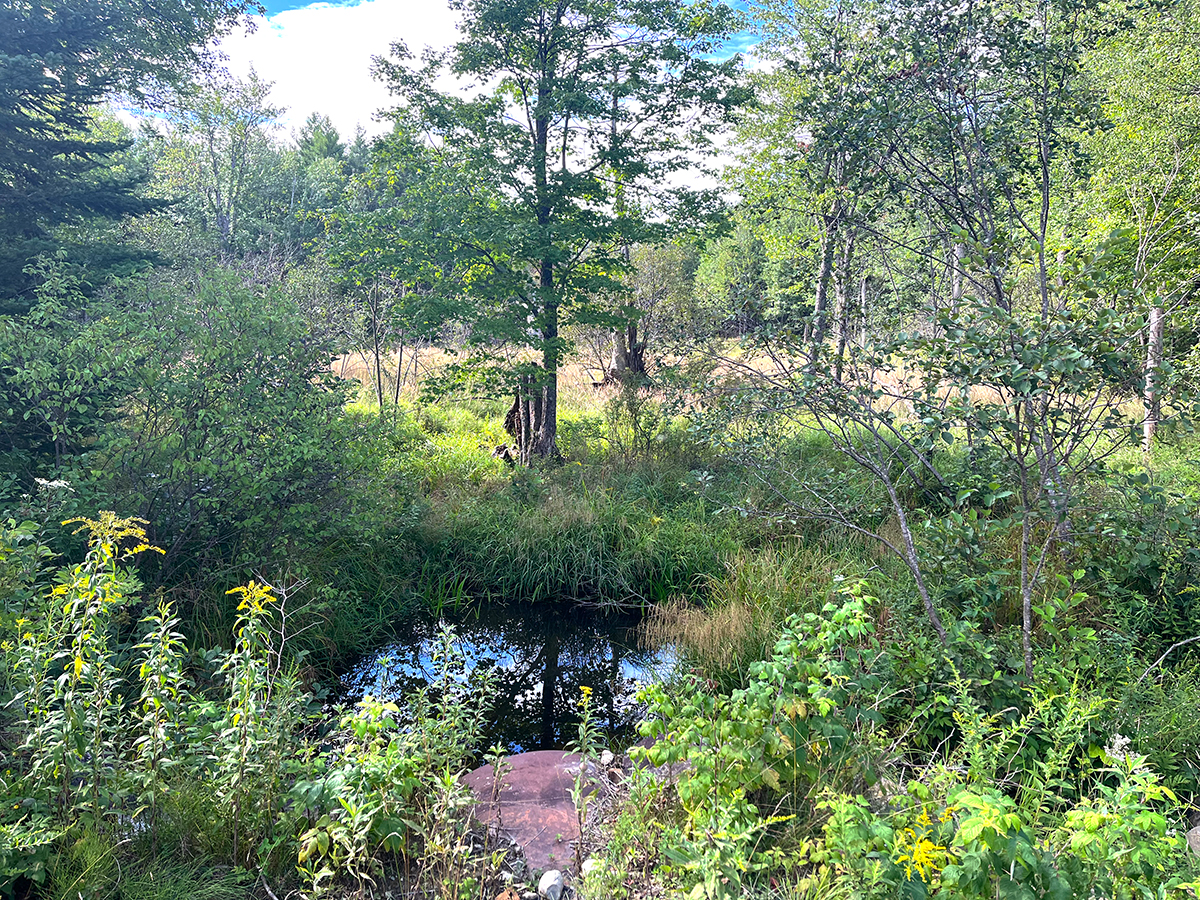New England Forestry Foundation Purchases, Conserves 1,285 Acres of Worcester…
NEFF has conserved nine ecologically valuable forests across three…

Get to know Shirley Bog—a forest complete with miles of sweeping river frontage and a mysterious Tall Sedge Fen—and Gardner Brook, an addition to NEFF’s Luce Memorial Forest and a critical piece of a mosaic of conservation land. Before we get into the details of these remarkable places, however, we first need a little backstory.
For decades now, New England Forestry Foundation has been delivering remarkable conservation results to the tune of 1.2 million acres, but NEFF Chief Conservation Officer Will Brune has of late found himself approached about land protection projects in an unprecedented manner: as a purveyor of large-scale Exemplary Forestry.
In 2019, NEFF was approached to take ownership of two Downeast Maine properties explicitly so we use NEFF’s Exemplary Forestry to benefit migratory song birds—the same Exemplary Forestry at the heart of our 30 Percent Solution—and this method seems to be catching on.
When the Maine Wind Energy Act first passed in 2003 (it has since been updated), the law was strongly influenced by NEFF’s Maine Representative and Senior Advisor, Alec Giffen, then the State Forester of Maine and chair of the Governor’s task force on wind power siting. Under the law, wind energy developers often are required to mitigate the ecological and scenic impact of their installations.
NEFF has been asked to manage special lands “for the birds” because of our acumen for forestry. By working collaboratively with the conservation community in Maine, NEFF has received two more Maine forests in keeping with the Maine Wind Energy Act, this time from Longroad Energy, LLC.
NEFF is committed to doing our best by the birds that currently use and will someday make their way to our new lands, and to honoring the work of those who championed the Act. This means keeping a portion of the landscape as early successional habitat that provides high-energy food sources, such as seeds and berries, for migrating songbirds.
While the context is unusual, it’s exciting to see NEFF conservation and Exemplary Forestry come full circle. Where was Exemplary Forestry developed, after all? On NEFF’s Community Forests, by NEFF foresters. And where will we continue to develop these game-changing forestry standards? On our growing base of NEFF-owned lands, which currently clock in at 40,000 acres. And to our surprise, it’s Exemplary Forestry that’s bringing in some of that new land—along with all of the hard work of NEFF’s conservation staff, or course.

Gardner Brook Forest, photo by Credere Associates, LLC
Bounded to the east by two miles of the West Brach of the Piscataquis River and cut through by Birch Brook from northwest to southeast before it enters the Piscataquis River itself, this Community Forest is a property run through with water. Its gently rolling terrain is filled with wet runs and brooks, most of which drain into the river.
The property’s wetlands and early successional habitat make for spectacular wildlife habitat. The property was recently harvested by a previous landowner, so it will take some time for the forest—dominated by mixed softwoods—to fully regenerate. In the interim, NEFF will manage Shirley Bog in a way that ensures a robust future forest with high-value habitat. In keeping with NEFF’s Exemplary Forestry standards, when forestry is conducted on-site, it will be done with the utmost care so as to ensure biodiversity and forest health are protected.
Shirley Bog has 263 acres of significant inland waterfowl and wading bird habitat along the bog portion of the river, which is also critical to its Tall Sedge Fen, located specifically in the West Shirley Bog. A June 2020 letter from the Maine Natural Areas Program (MNAP) explains the fen’s importance:
“Large, high quality examples of this wetland type are uncommon in Maine and provide important habitat for a wide variety of plants and animals. Where possible, MNAP recommends leaving an uncut forested buffer around the wetlands mapped as part of the Tall Sedge Fen.”
The river, a true ecological hotspot, also provides critical habitat for Atlantic Salmon and has a high density of natural brook trout. The area may even provide habitat for Canada Lynx.
Gardner Brook forest was a great fit for NEFF because it abuts the existing 78-acre NEFF Luce Memorial Forest, as well as an adjacent 424 acres owned by the Kennebec Land Trust and the 110-acre Readfield Town Forest. By taking ownership of this large “hole in the doughnut,” we have created a new 402-acre NEFF forest in Readfield as well as an overarching, connected habitat block of 936 conserved acres.
Even standing on its own, NEFF’s new Readfield parcel is nothing to sneeze at: more than 82 percent of the property can support productive forestry, its forests are stocked with mixed hardwoods at over 30 cords per acre (that’s a lot), and it still hosts 57 acres of wetlands and inland waterfowl and wading bird habitat, as well as supports 170 acres of deer wintering habitat.
Trek through its woodlands on the established trails and you’ll see Beech, Balsam Fir, Hemlock, Paper Birch, Red Maple Red Oak, White Ash, White Pine, Yellow Birch and Sugar Maple. Given how high the forest’s stocking is, visitors are also likely to hear a lot of bird song and perhaps catch glimpses of birds on the wing.